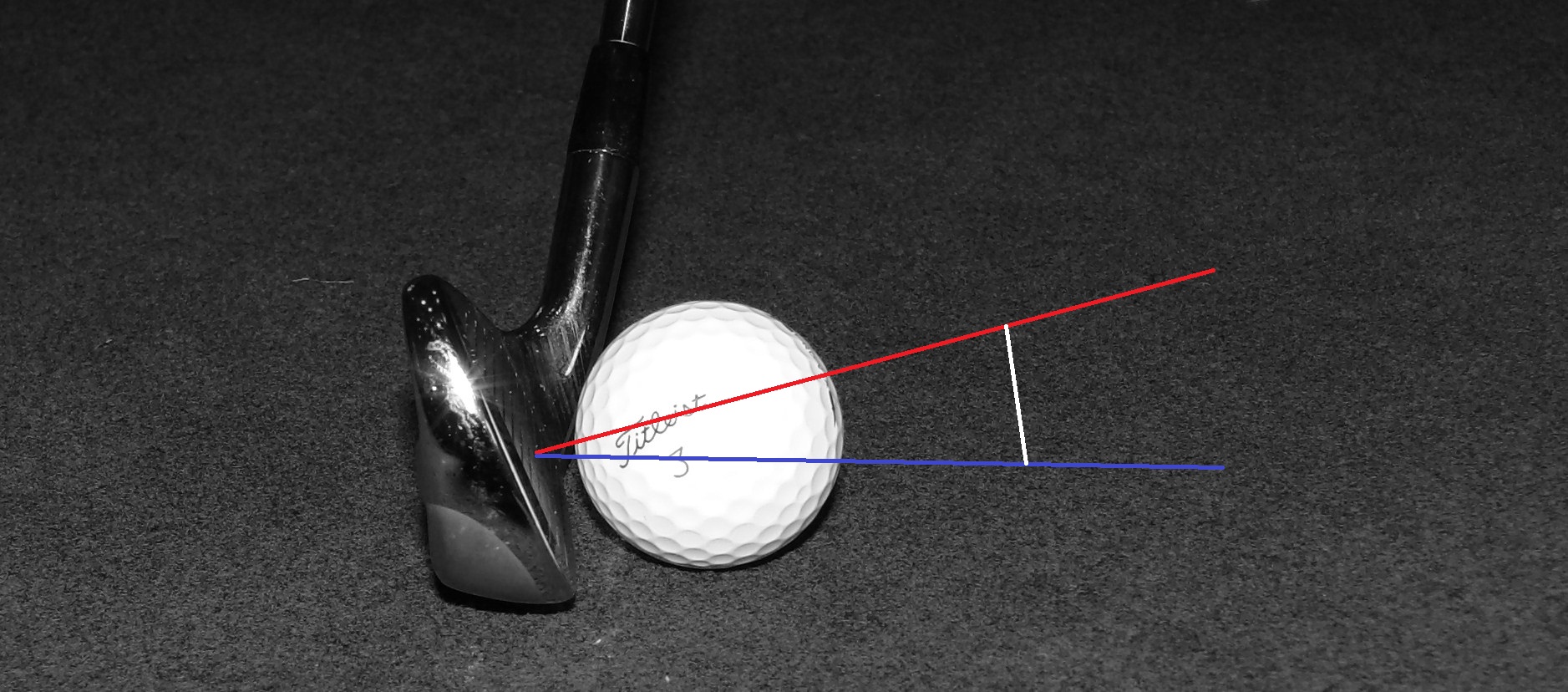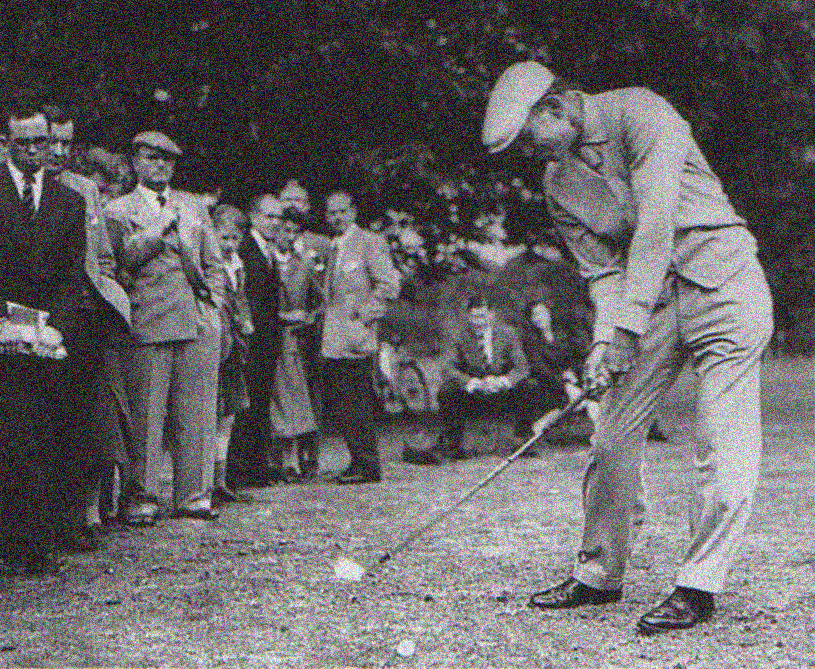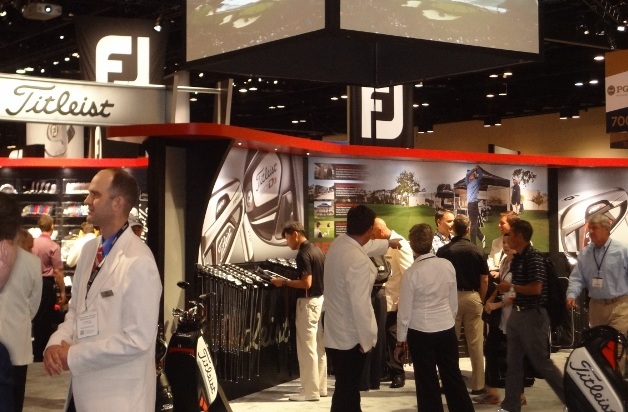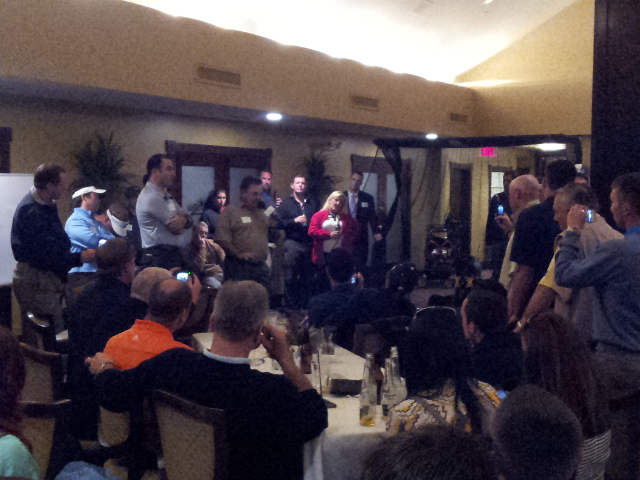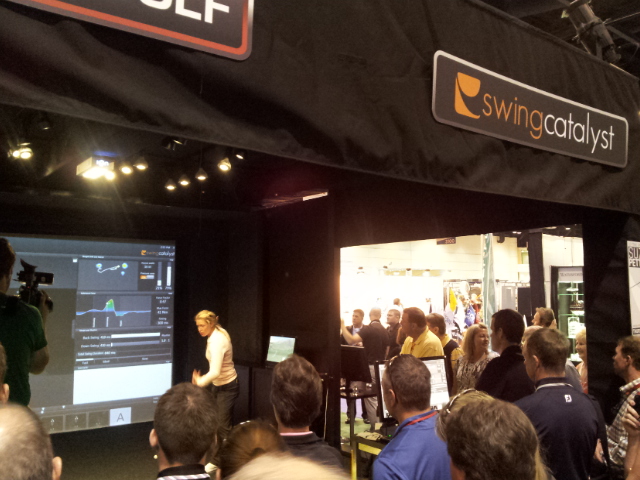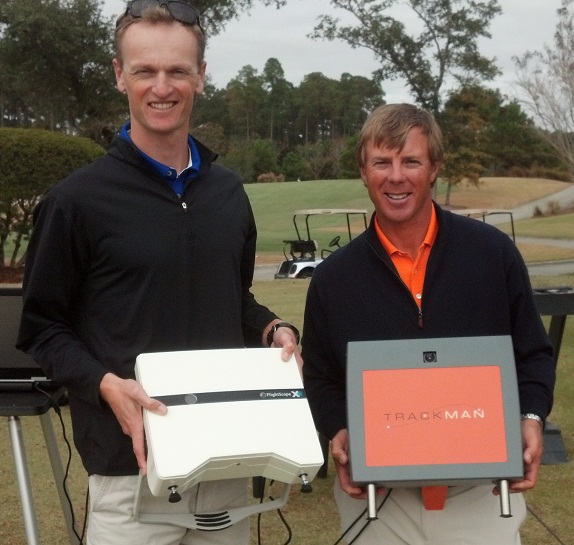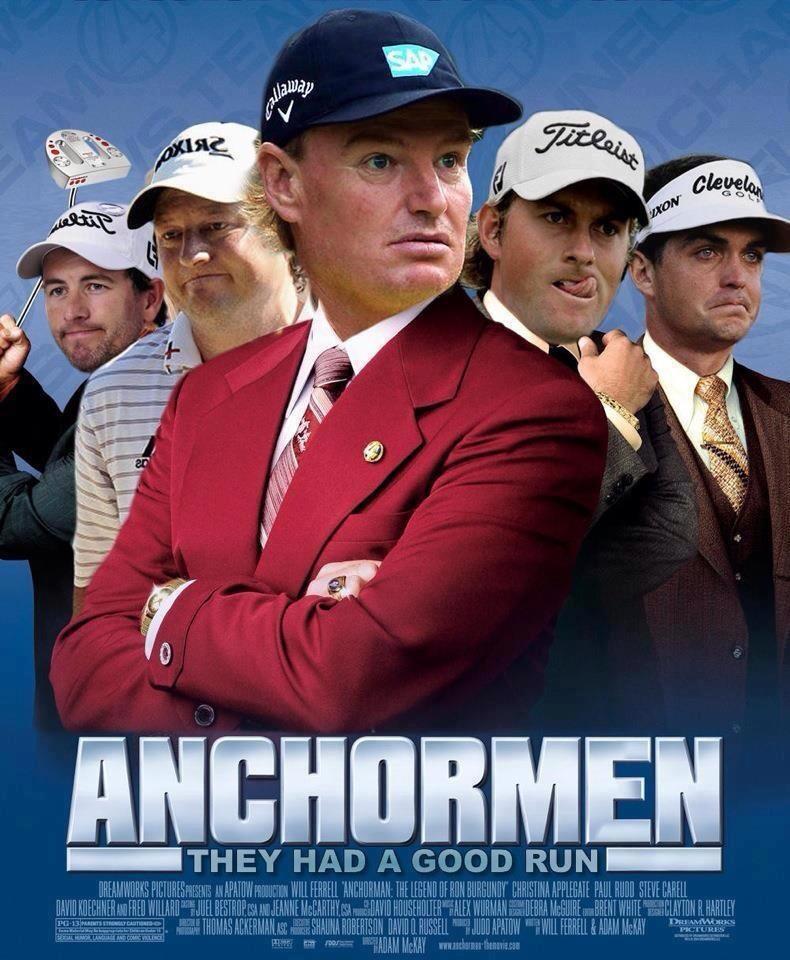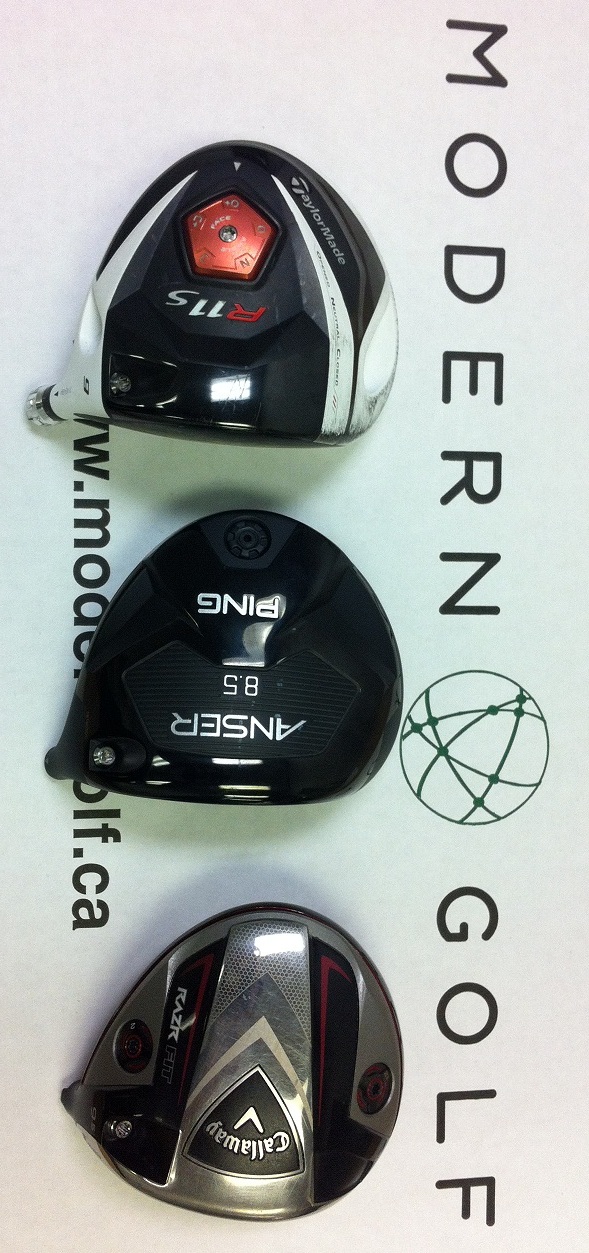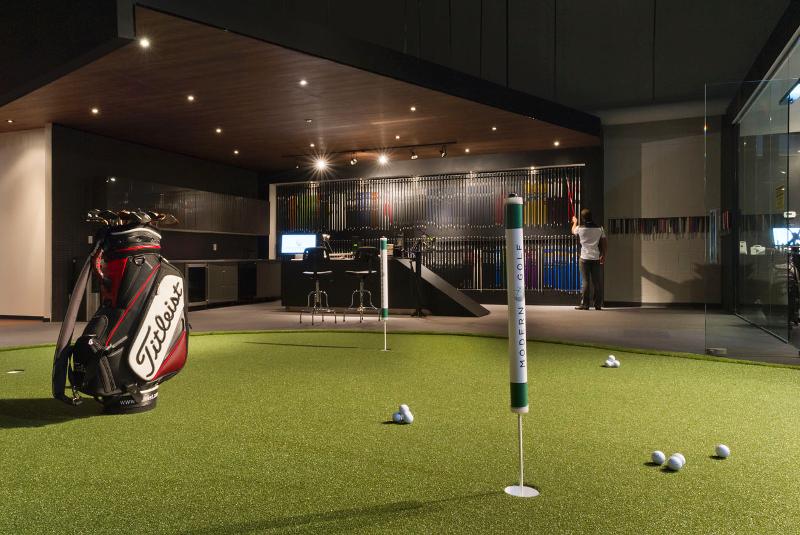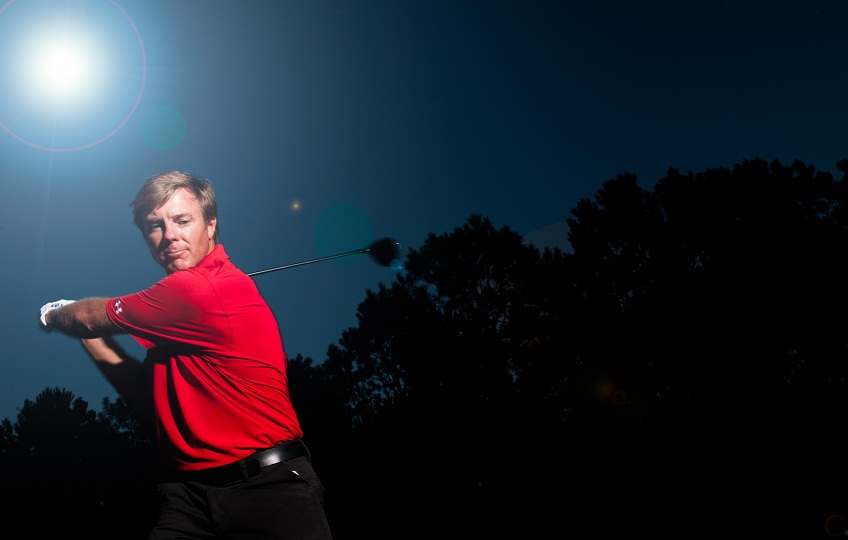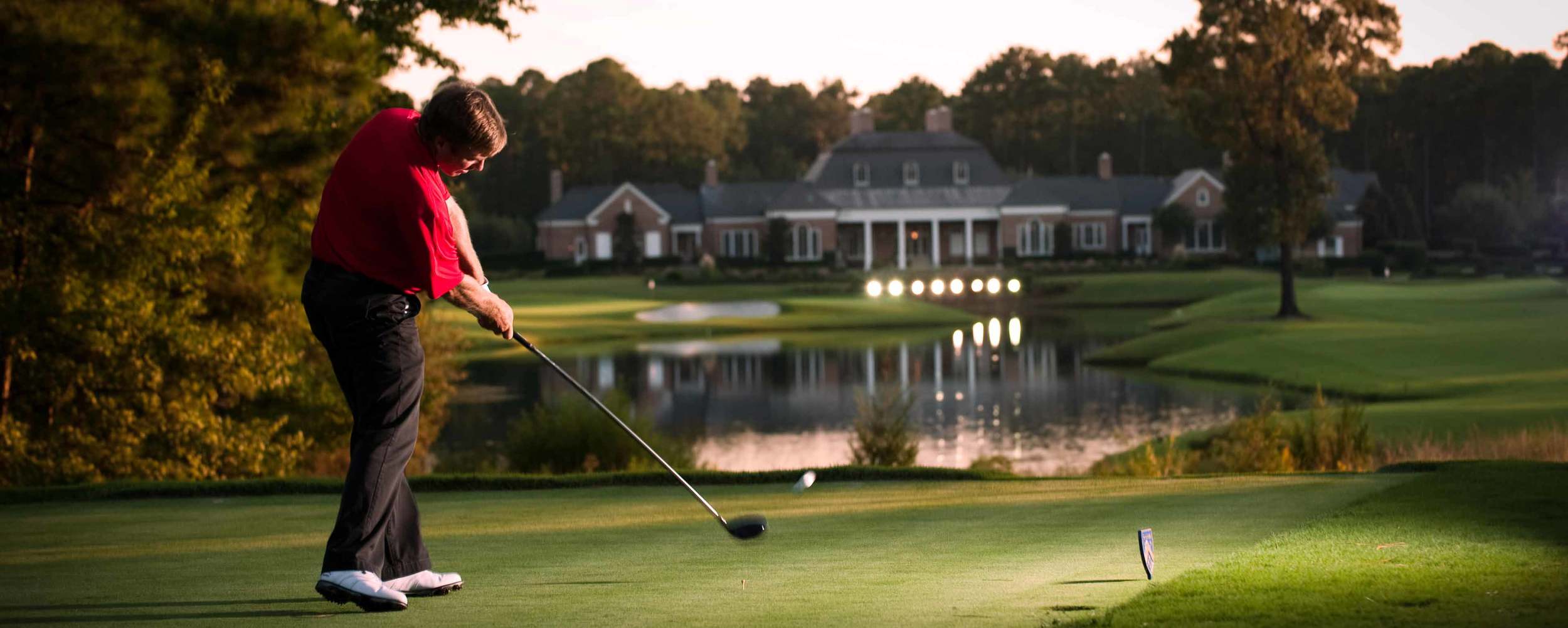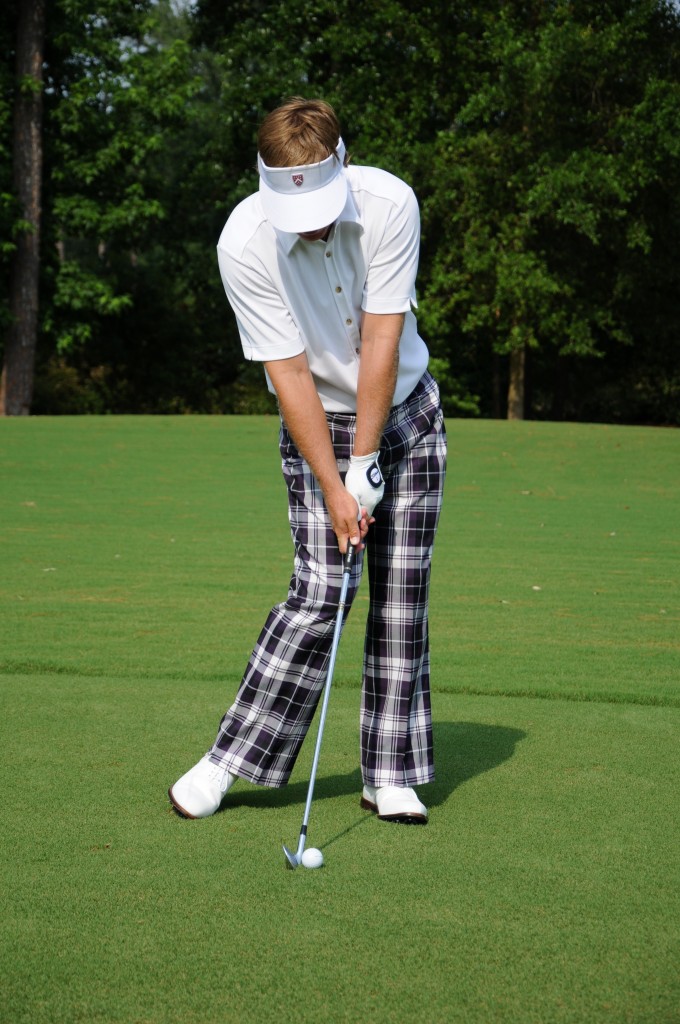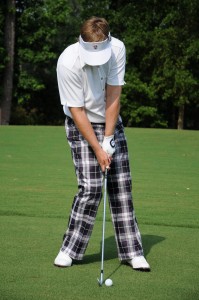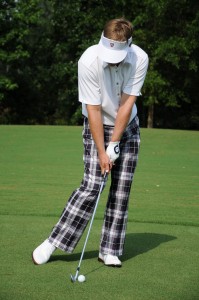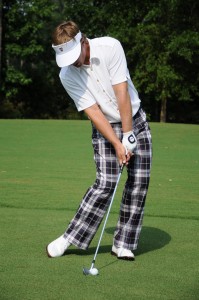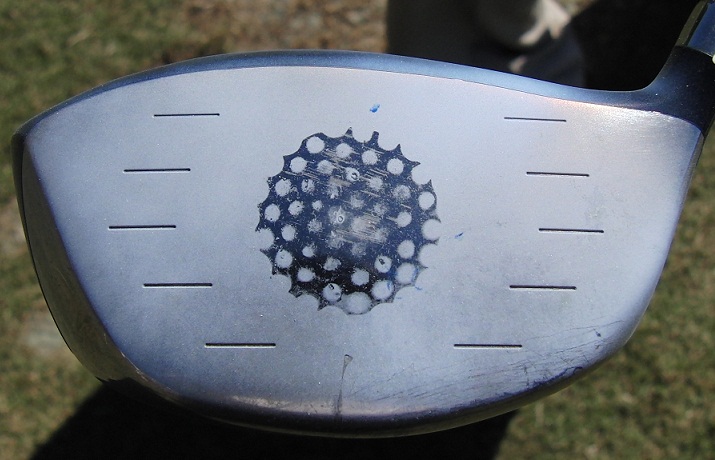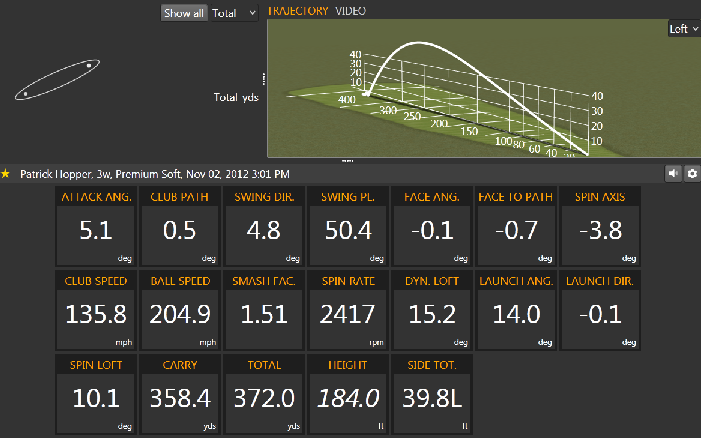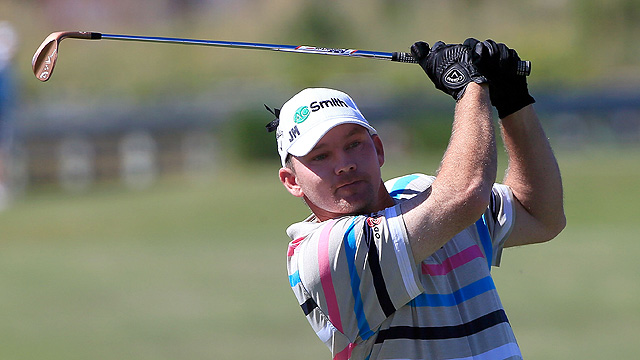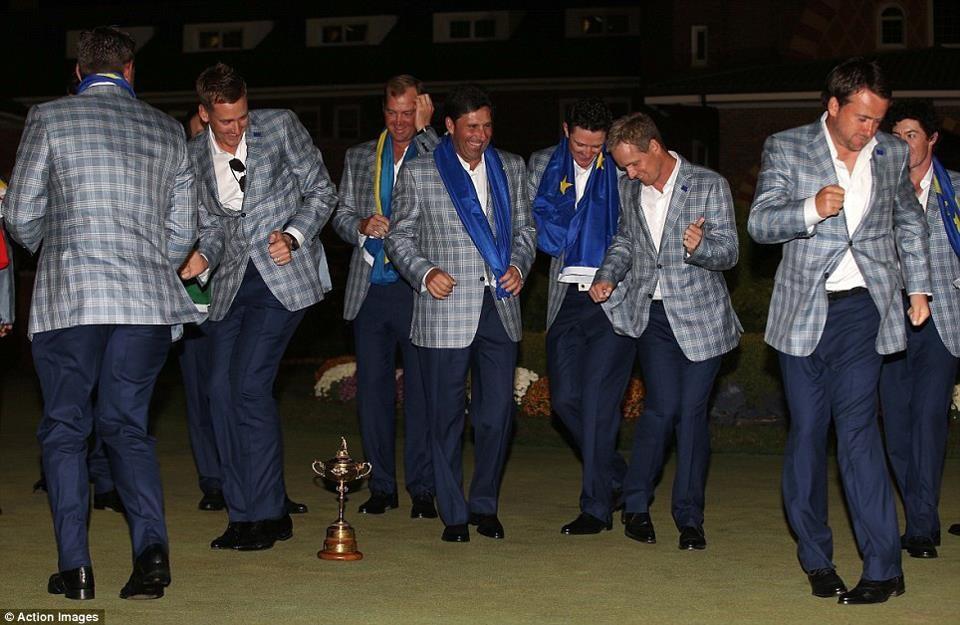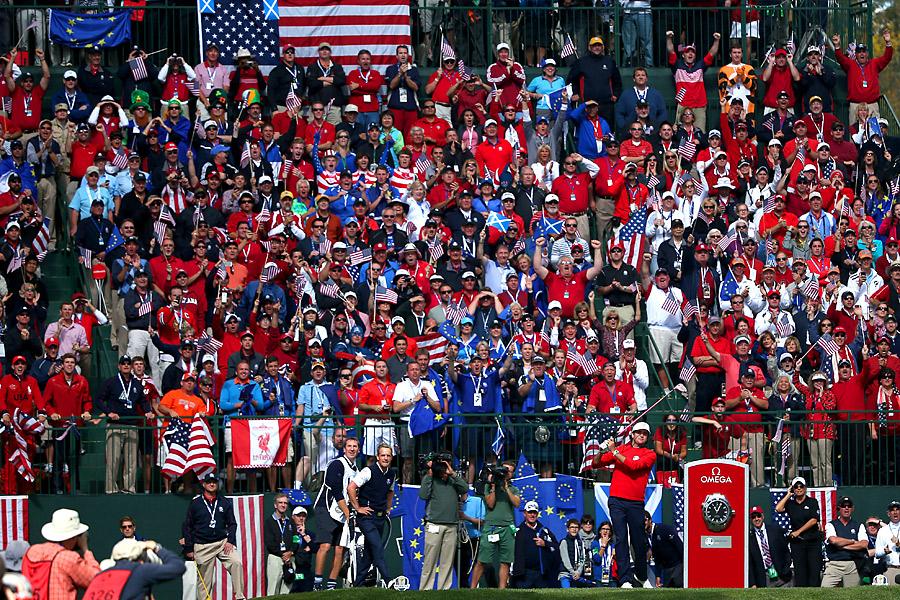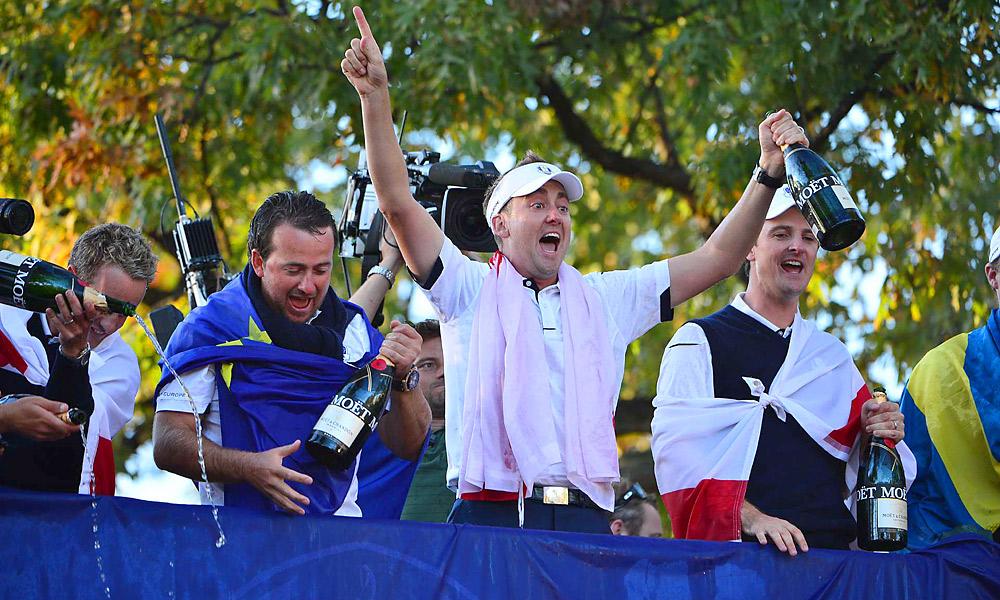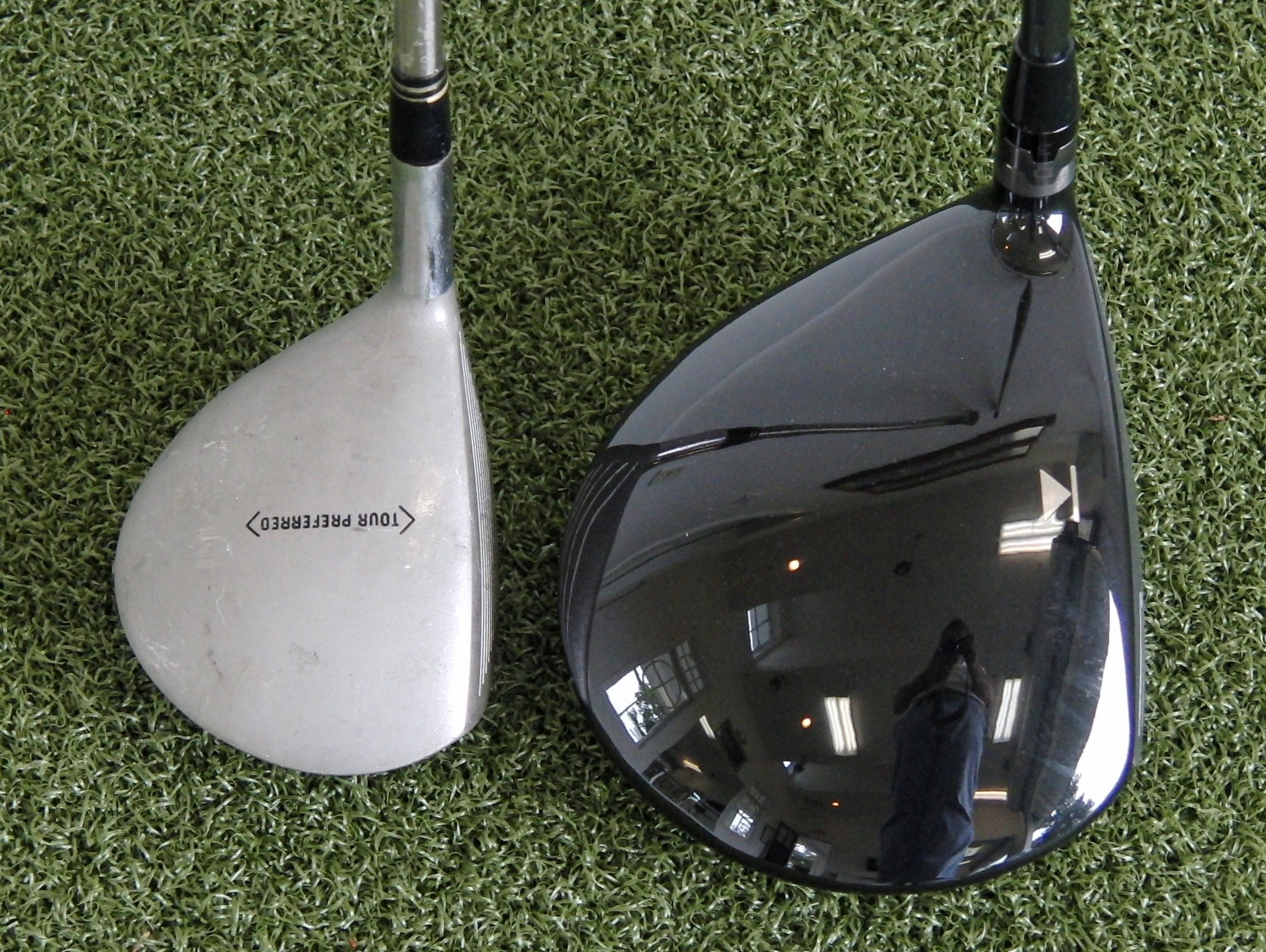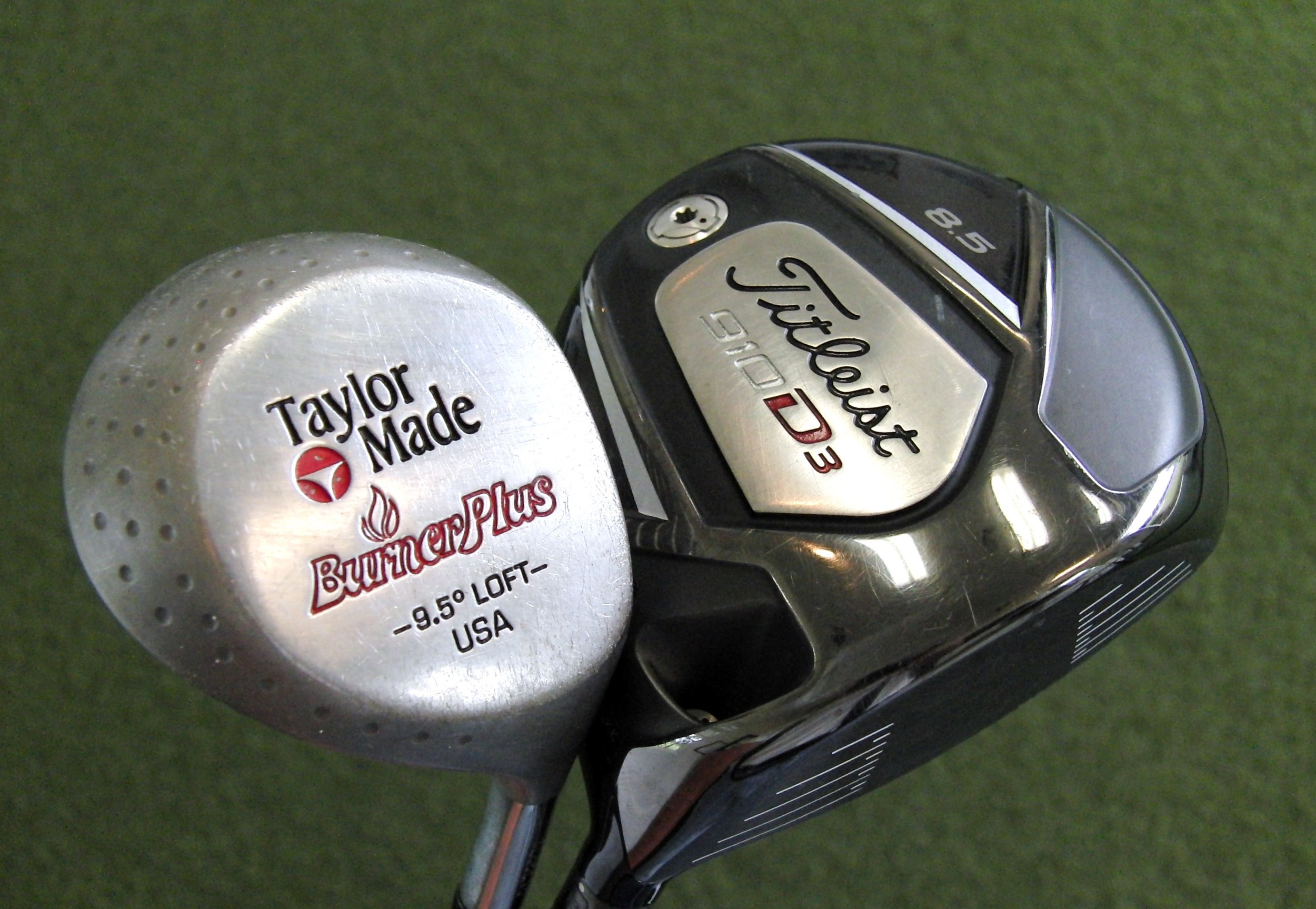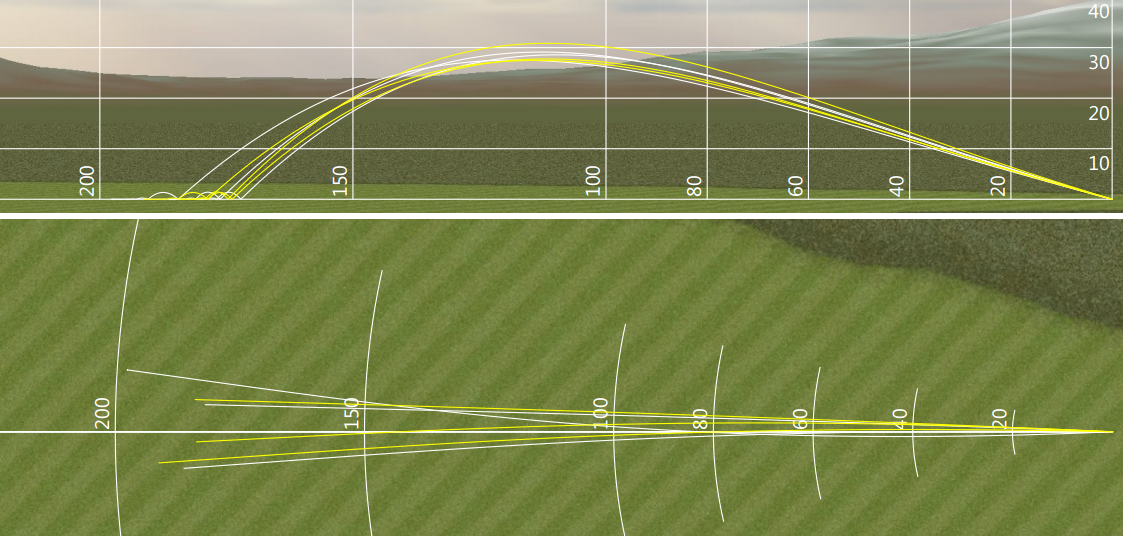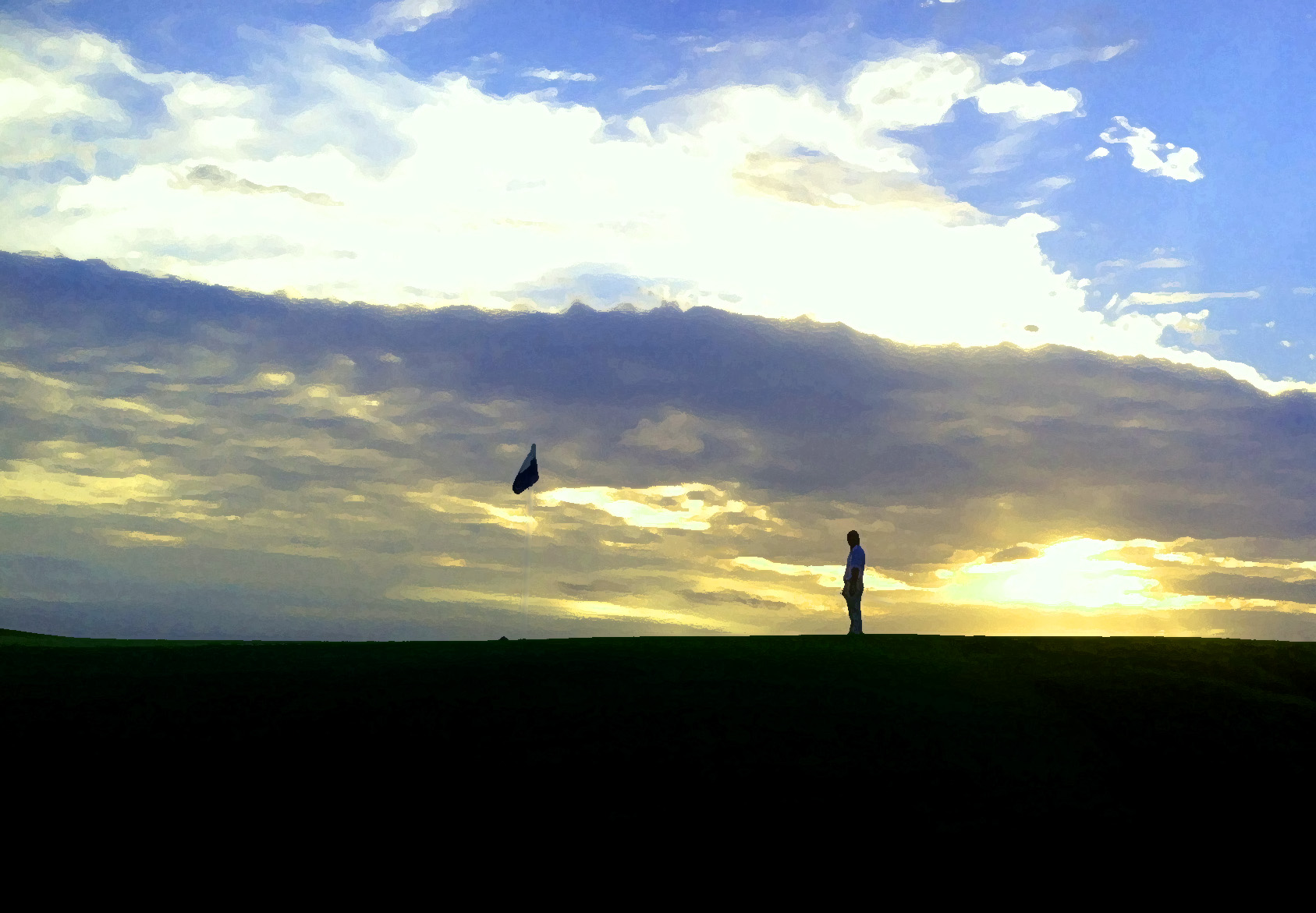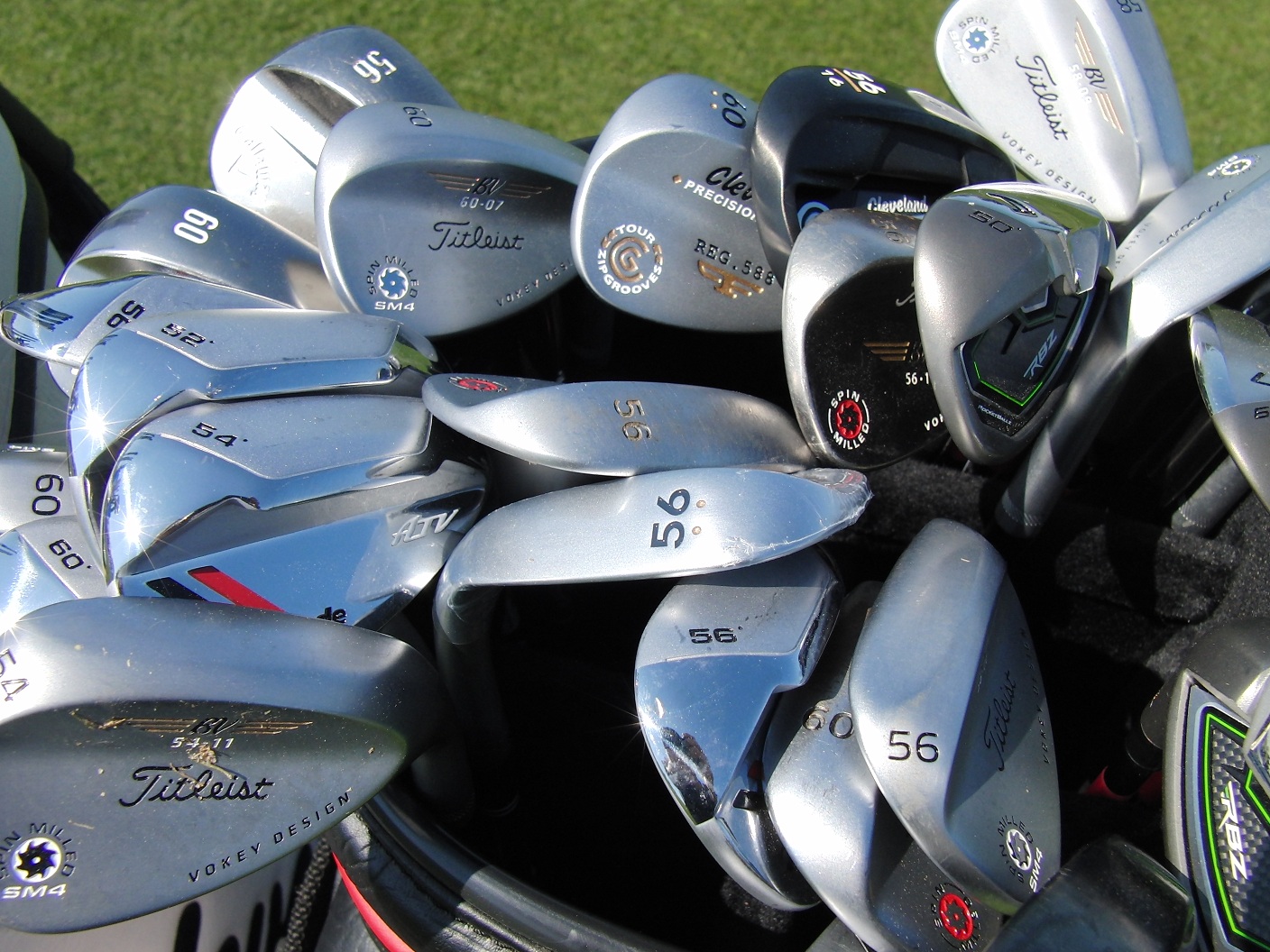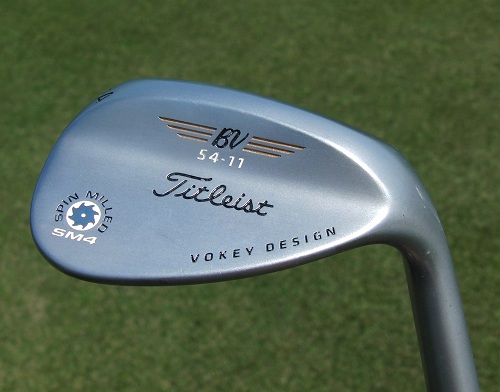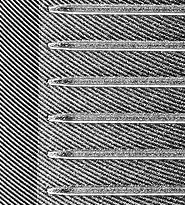Compress the Golf Ball
/ One of the most important aspects of great ball striking is compressing the golf ball. Now, we've all heard that statement and we know the feel of a purely struck shot, but what really is compression and how can we do a better job with it? Let's start by understanding the photograph below. This is a simulated shot where the clubface is just about to reach the back of the golf ball. The red line indicates where the loft or upward face angle is at impact and the blue line indicates the direction the clubhead is travelling during impact. The white line connecting the two represents the amount of compression "experienced" by the golf ball.
One of the most important aspects of great ball striking is compressing the golf ball. Now, we've all heard that statement and we know the feel of a purely struck shot, but what really is compression and how can we do a better job with it? Let's start by understanding the photograph below. This is a simulated shot where the clubface is just about to reach the back of the golf ball. The red line indicates where the loft or upward face angle is at impact and the blue line indicates the direction the clubhead is travelling during impact. The white line connecting the two represents the amount of compression "experienced" by the golf ball.
The narrower the gap or closer the two lines are the more compression will be exerted onto the golf ball and assuming a decent strike and appropriate launch, the ball will travel further. TrackMan refers to this gap as spin loft and without being too detailed it is the difference between where the face points at impact and where the clubhead travels at impact.
Fredrik Tuxen - one of the founders of TrackMan refers to spin loft as compression itself. To get a better understanding of how the numbers work let me give you a few examples: Jack hits a 5 iron with the face pointing at 16 degrees and the clubhead moving 2 degrees down. Bob swings at the same speed as Jack with his 5 iron and he gets the face pointing 15 degrees up and the clubhead moving 6 degrees down. Jack has a spin loft of 18 and Bob has a spin loft of 21. Both shots are hit well, so which goes further? Jack's does because he has a narrower spin loft gap and thus compresses the ball more than Bob. What spin loft would create the maximum compression? Zero! However, as we will learn spin loft is in large part responsible for the amount of spin imparted on any shot and a golf ball needs some spin to keep it flying in the air. I have found that a spin loft of 11 is very good for a driver.
Some interesting points about compression or spin loft:
- Hitting down will not increase your compression of the golf ball or the spin on the shot. Invariably this only leads to a shot where the face angle and the clubhead direction both move downward - there is no change in spin or increase in distance.
- A higher spin loft increases spin and generally slows down ball speed.
- If you have similar swing speed, but hit your shots far shorter than your playing partners - this is due to a lack of compression on your shots.
- Shots with a lower spin loft will curve in the air more easily than shots with less compression. That's why it's easier to keep a 7 iron straighter than a driver.
- Custom club fitting can help to improve your spin loft simply by delofting either your irons or driver.
Now that we really understand what true compression is we can start to look at methods to help us improve our own ball striking. There are two ways we can compress the ball better - deloft the face angle more at impact without hitting down any more or hit down less without increasing the the loft of the face during impact. Ideally we need to deloft the face without hitting down any more. Notice how in the Jack and Bob example I used above - Bob's face was delofted more than Jack's, yet he hit down more and this limited his ability to compress the ball.
To get a good sense of what is required:
- Get in front of a mirror with a 7 iron.
- Grip the club and facing the mirror get the clubhead about 3" off the ground two feet back from where the ball would be.
- Now slowly glide the clubhead through impact while maintaining the 3" space between the clubhead and the ground noticing that as you go beyond impact how much your hands need to stay in front.
- When you start hitting balls - start small and hit soft shots off of a tee.
- There should be no ground contact, try to leave the tee in the ground and see how low you can hit these little 7 iron shots.
This is the feel you want! Delofting the face without slamming the club into the ground. And believe it or not this applies to the driver as well. I know it may sound strange and it took me a while to wrap my brain around this, but it is entirely possible to hit up on the ball with the handle/hands in front of the clubhead.
If you have gained something from this article please share it with a friend. Let's be honest, they could most probably do with the help....


